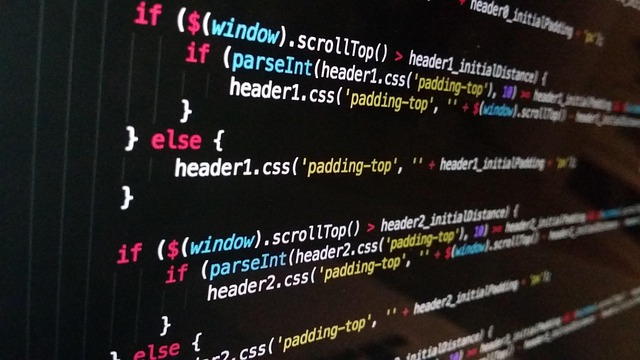In the digital era, the line between a software developer’s professional life and personal online presence has blurred. With social media platforms offering unprecedented reach, developers find themselves sharing code snippets, project updates, and industry insights in real time. While this connectivity fuels collaboration and brand building, it also introduces a complex web of data protection risks that cannot be ignored.
Why Social Media Matters to Software Developers
For software developers, social media serves multiple purposes: networking with peers, showcasing portfolios, recruiting talent, and staying abreast of emerging technologies. A developer’s online activity often reflects on their reputation, influencing hiring decisions, client trust, and even stock valuations for tech companies. Consequently, any breach or misuse of personal data on these platforms can have cascading effects on both individual careers and corporate outcomes.
Key Data Protection Challenges
- Exposure of proprietary code through casual sharing.
- Inadvertent disclosure of sensitive customer or client information.
- Account hijacking and credential reuse across multiple services.
- Regulatory compliance gaps when sharing content internationally.
- Third‑party app permissions that harvest more data than intended.
Proprietary Code on Public Platforms
It is not uncommon for developers to post screenshots, snippets, or even entire functions to illustrate a problem or solution. However, without a rigorous review process, even a seemingly harmless excerpt can reveal algorithmic logic or architectural insights valuable to competitors.
“A single line of code can expose a vulnerability or provide a blueprint for reverse engineering.” – Anonymous Lead Engineer
Best practices dictate that code shared publicly should be thoroughly vetted, stripped of any references to proprietary libraries, and, when possible, presented in a generic, anonymized form. Many developers now adopt “code sanitization” tools that automatically filter out sensitive identifiers before a post is published.
Personal Data Leakage through Oversharing
Beyond code, developers often share personal anecdotes, project milestones, or team photos. While such content humanizes their online persona, it can unintentionally disclose location data, schedules, or internal project details that might be leveraged by malicious actors.
- Check privacy settings to limit audience reach.
- Use placeholders or blurred images for sensitive contexts.
- Schedule posts to avoid real‑time exposure of confidential timelines.
Credential Management and Account Security
Software developers frequently use the same credentials across multiple platforms—email, code repositories, cloud services, and social media accounts. When a single credential set is compromised, attackers gain a foothold that can be exploited to exfiltrate data, inject malicious code, or impersonate the developer.
Implementing multi‑factor authentication (MFA), rotating passwords, and employing a reputable password manager are fundamental safeguards. Additionally, separating personal and professional accounts can reduce the blast radius of a potential breach.
Regulatory Compliance in a Global Landscape
When developers post content that reaches audiences across borders, they must be mindful of varying data protection laws—GDPR in the European Union, CCPA in California, and numerous emerging regulations worldwide. Failure to comply can result in hefty fines and reputational damage.
To navigate these complexities, developers should:
- Limit the sharing of personal data that can be traced back to specific individuals.
- Use location filters to avoid exposing geographic identifiers in jurisdictions with strict privacy requirements.
- Keep records of data processing activities for audit purposes.
Third‑Party Apps: A Double‑Edged Sword
Many developers rely on third‑party applications—code review tools, CI/CD integrations, analytics dashboards—to enhance productivity. While these tools can streamline workflows, they also introduce new vectors for data exfiltration if they are granted excessive permissions.
“An over‑privileged app can read every post, comment, and message, providing a treasure trove of data for malicious actors.” – Cybersecurity Analyst
Before integrating any new application, developers should:
- Review the privacy policy to understand data usage.
- Verify that the app only requests permissions necessary for its function.
- Perform periodic audits to ensure no dormant permissions remain.
Building a Culture of Data Protection
Individual vigilance is essential, but organizations also play a pivotal role in safeguarding developer data. Companies can establish clear guidelines on social media conduct, provide training on data handling, and deploy technical controls such as content filters and monitoring dashboards.
Creating a “social media data protection policy” can help developers understand the boundaries of what can and cannot be shared. Pairing policy with regular refresher courses ensures that even seasoned developers remain conscious of evolving threats.
Practical Steps for Developers
Below is a concise checklist that developers can incorporate into their daily routine to mitigate risks:
- Verify audience settings before posting.
- Use anonymized code snippets.
- Enable MFA on all accounts.
- Audit third‑party app permissions quarterly.
- Stay updated on regional data protection regulations.
- Report suspicious activity to platform support immediately.
Future Trends: AI, Deepfake, and Beyond
Emerging technologies are reshaping the threat landscape. Artificial intelligence can now generate convincing deepfake videos, potentially impersonating developers in corporate announcements. Likewise, AI‑driven social media bots can harvest data at scale, amplifying the reach of malicious content.
To stay ahead, developers should:
- Adopt AI‑based monitoring tools that flag anomalous posting patterns.
- Verify the authenticity of any video or image before sharing.
- Collaborate with legal teams to understand the implications of AI‑generated content.
Conclusion
The synergy between software development and social media offers undeniable benefits—faster collaboration, wider visibility, and a richer professional network. Yet, with these advantages come intricate data protection challenges that demand careful attention. By integrating robust security practices, fostering a culture of awareness, and staying informed about regulatory shifts, software developers can confidently navigate the social media landscape while safeguarding their personal and professional data.



